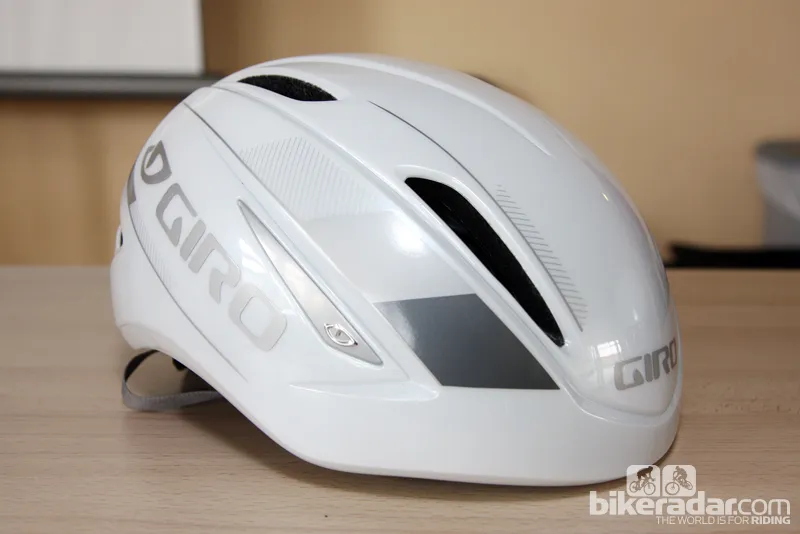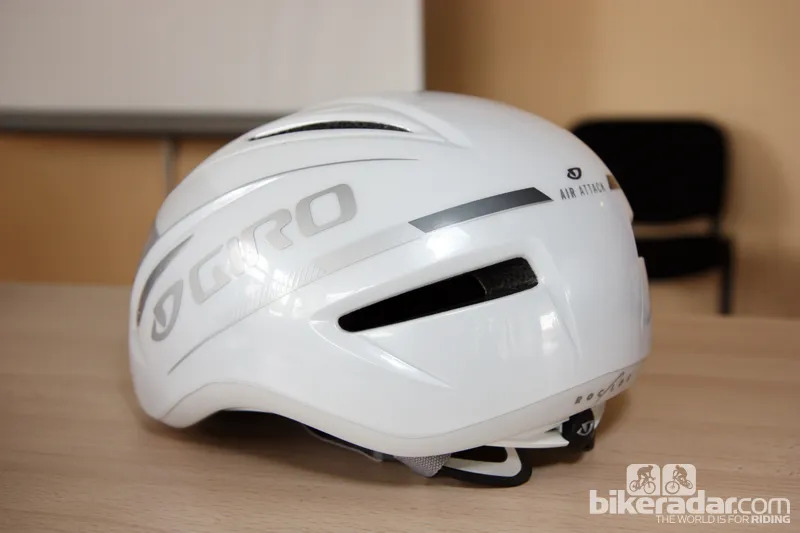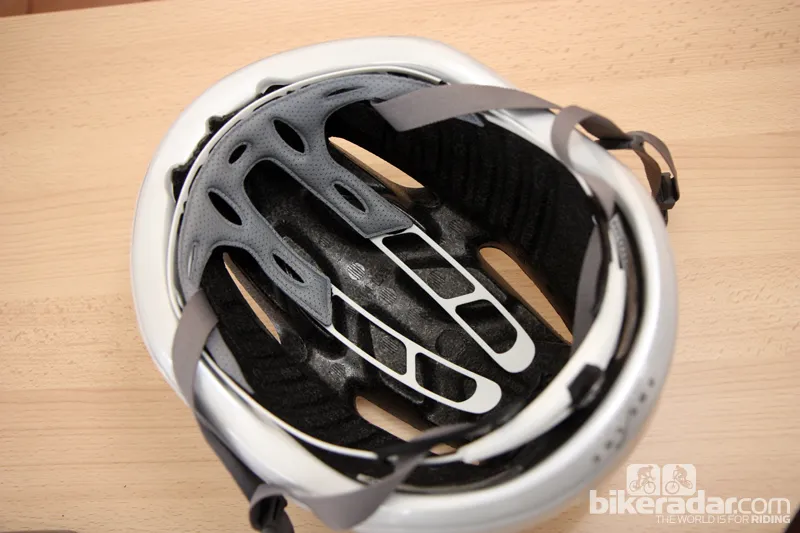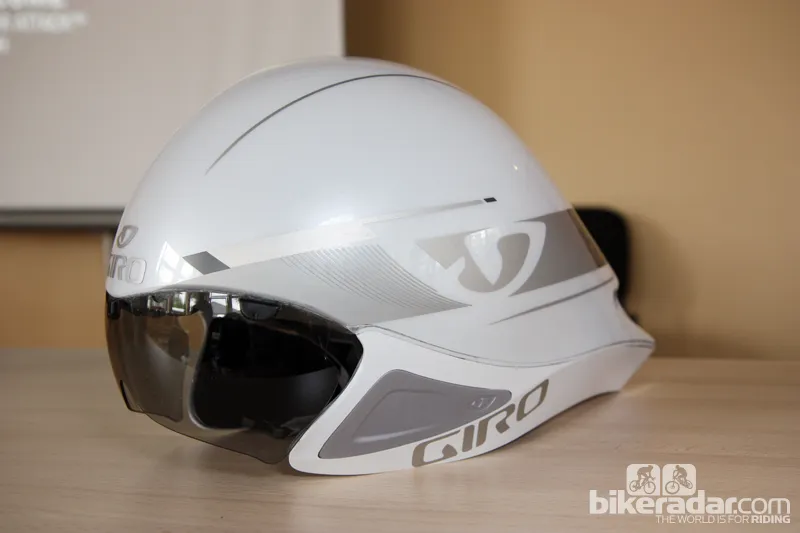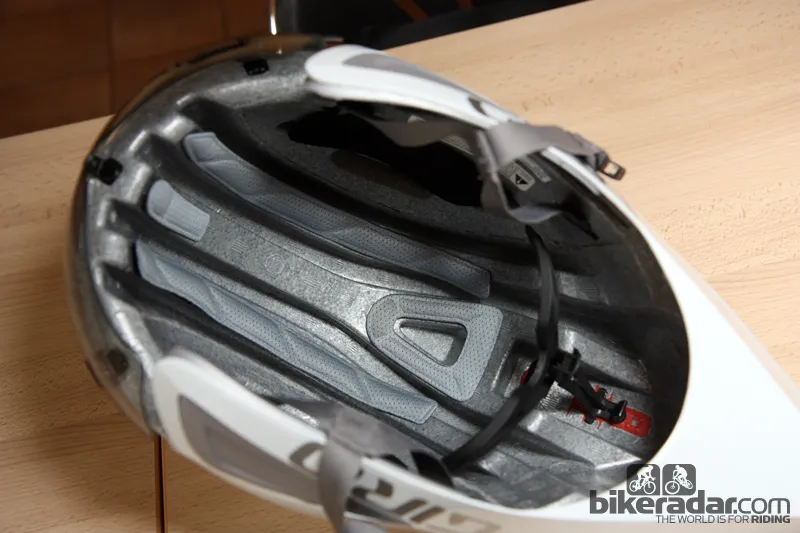Giro may have broken technological ground with its aerodynamic Air Attack helmet, but in doing so the company also generated plenty of polarizing opinions with its form-follows-function design philosophy.
Like it or not, aero helmets are here to stay and, if anything, we're going to see more of them soon. BikeRadar sat down for a chat with Giro R&D director Rob Wesson on how we got to this point – and where we go from here.
Much as the design priorities in the road bike market have recently shifted from weight and stiffness to aerodynamics, Wesson says we're in the midst of a similar trend in road helmets. Whereas cooling, comfort, and aesthetics were once the primary motivators, he says an increasing number of consumers will begin judging helmet performance in more objective terms than before.
"We started seeing the trend a couple of years ago, certainly with bike manufacturers looking at shaped tubes and all the different helmet manufacturers coming out with teardrop-shaped TT helmets," Wesson told us. "We saw this shift. Helmet design had reached this plateau. When you stand back and take a bird's eye view of the start line at a Pro Tour race, it became hard for us to even tell our own helmet from our competitors'."

Giro R&D director Rob Wesson says aerodynamics will only play a bigger role in helmet design in future
According to Wesson, it was at that point that Giro decided it was time to take a more engineering-focused approach to helmet design – one that offered more tangible performance benefits to the rider instead of just light weight, lots of ventilation, and a pretty face.
"We started talking about, okay, what do riders want? What's the next project we want to work on? We knew it wasn't just going to be another styling exercise because we've done that and we do it very well – but that's not what the customer wanted.
"So we went after the aero side and said, okay, this is where the industry is going, this is where people want the small gains that they can get from every part of their equipment. We were going to let the function drive this helmet, not aesthetics."
Wesson said wind tunnel testing revealed several key pieces of information, not only in terms of how the helmet should be shaped but also how rider positioning affects aerodynamics on a helmet with more conventional proportions.
"As the helmets get shorter, the data now shows that you don't get a decrease in performance when you put your head down. So we know we could get some advantage there as long as we kept [the shape] rounded.
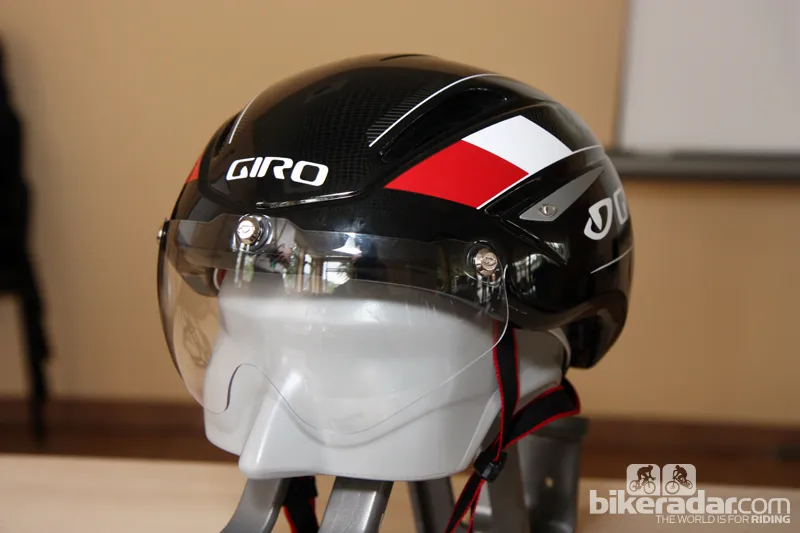
Cover your eyes! One of Wesson's aero suggestions
"We also tested with a visor, no visor, and glasses. There's definitely a difference between riding with nothing and with glasses or a visor because now you've opened up the eye sockets – air has more area to play around your face and get tripped up. As soon as you put on glasses or a visor, that high-pressure area is able to redirect the wind to the side. Your ears are really bad as the air comes around the side of your head. That's why a full-on TT helmet covers your ears."
Sharp edges are also a big no-no, according to Wesson, regardless of how they're oriented.
"Any time you're into the wind and you're asking air to flow over a sharp edge, that immediately trips the air," he said. "You're trying to get this smooth, laminar flow and as soon as you ask it to go over this steep cliff or an edge, it trips up the air. As soon as that air starts to spin past that edge, it's almost like it's pulling you backwards. Regardless of where you put the sharp edge – even front to back – that trips up the air."
Though aerodynamic performance was paramount on the Air Attack, Wesson acknowledged that riders aren't solely concerned with going fast when on the road; ventilation is still a critical component. In this case, though, Wesson said it was more important to carefully manage exactly how that air flows in – and out – of the shell.
"Any time you can keep a clear path for air to flow, that's going to be better. If the air has an easy way to get out [of the helmet], it will. Keeping it straight is always the best, but if you don't and you ask air to come in fast at a [side] vent and find a convoluted way out, it won't. Air just packs up and flows over the top."
Speaking of flowing over the top, we also asked Wesson about the effects of hair on aerodynamic drag. In short, hair is bad: "Hair is, um, unaerodynamic. If you want to be the coolest and most aerodynamic you can be, shave your head. The only issue is that when you wear something like an Aeon, you get that sun load so, in that case, your hair acts as a good sunblock."
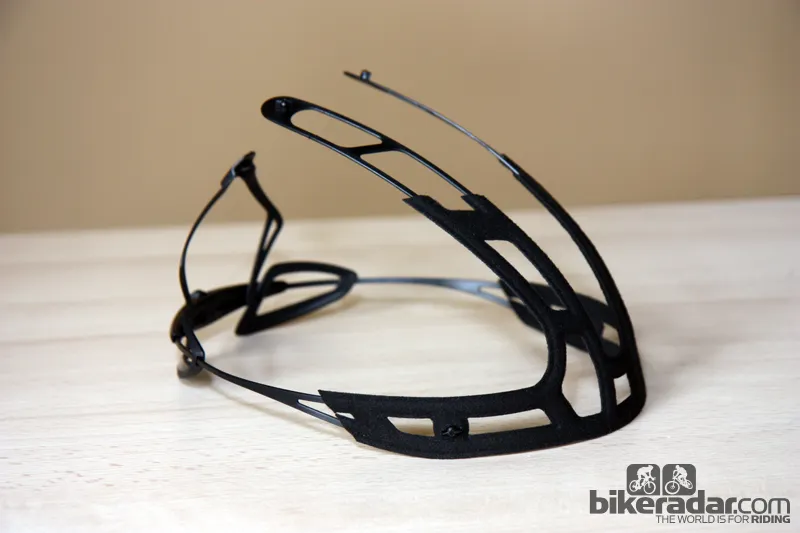
Giro's Roc Loc Air system holds the helmet off your head for ventilation
Regardless of your opinion on aero helmet aesthetics, recent moves by numerous other companies – including Specialized, UVEX, Scott, Kask, Lazer, and more – clearly indicate that the trend will continue to move forward. That doesn't mean aero-inspired helmets will wholly replace conventional ones, but it's a safe bet that even those helmets will eventually sprout some aerodynamic details.
"For someone non-competitive, it probably doesn't matter at all," said Wesson. "We've gotten some positive comments from people who just like the [Air Attack] shape. For the average rider who just wants to ride, this gives them a different option. There are other people who don't like the shape, who like where our current helmets are, but I think if you look at the racing scene it's the helmet for the right event.
"Just like people don't ride road helmets in time trials any more because it's not the right helmet, now we're getting down to fast crits, a road race that doesn't have a lot of climbing in it, or you want to get into a breakaway – this is the helmet that you'd want to choose for that. It's just that little bit extra."
Be prepared for more of those choices, too – and not just in terms of helmets. It's widely accepted that aerodynamics is the current hot topic in terms of bicycle technology development. Specialized even recently unveiled its own in-house wind tunnel and boldly proclaimed that no product or category would be off limits in terms of aero tweaking.
Does Wesson expect hard data to influence the look and feel of bikes, components, and associated gear even further? You bet: "Oh, absolutely. Every component now is being scrutinized. Every little piece."
For more information on Giro products see www.giro.com.
